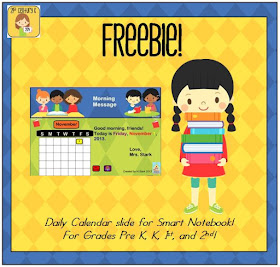There are SOOO many resources "out there" for teaching sight words, SOOO many lists, and SOOO many opinions on the matter that I thought I would add my thoughts to the mix...
And I HATE them!
There. I said it once and for all. I hate sight words. I mean, they break all the rules, they are easily confused, and they are a pain to assess and keep organized! As a teacher I hate feeling like a failure when we go over and over words like "the" and "what" and "said" and many of my Kinders or struggling readers still don't know them. As a parent I feel pressure to suffer my own children through flashcards and list reviews just to be able to compete with other kids or earn a reward for finishing a set of words. As an interventionist I hate that my hard-working students' reading abilities are judged by the number of words they can call in isolation.
I'll bet you have felt some of those same things, but just didn't say them "out loud." So, if that's the case, then why oh why do we devote so much time and energy into teaching sight words?!?
Or maybe you think I'm crazy and you LOVE sight words?!?
There are certainly many schools of thought on the matter.
Those who love sight words may believe some of the following:
- Sight words are not decodable there for the only strategy for reading them is to memorize them.
- Sight words (or more specifically high frequency words) account for more than 50% of printed material.
- Knowing sight words with automaticity quickly improves reading rate and fluency.
I concede that these are all very good points and there must be a place for sight word instruction in our literacy curriculum. But, I oppose the notion that sight words must be learned in a rote manner and must be acquired at a mind-boggling pace in Kindergarten and First Grade. So, I present
5. We are missing the bigger picture! When we emphasize memorization of whole words we tend to neglect the idea that words are made up of smaller sounds (or phonemes). Young readers need to understand that words are made of parts and when they know lots of parts they can figure out lots of words (without having to memorize them all).
4. We are unfairly judging our students. There are lots of ways to solve words and memorizing them is only one way. If we classify, rank, or even reward our students for memorizing lists of words and equate quantity of memorized words to reading ability we are being very unfair. What about all the other ways readers solve words?!? Words can be solved through phonics, context clues, picture cues, and a strong grasp of oral language.
3. We are putting undo pressure on everyone! The idea that Kindergarten students need to know X-number of sight words just causes stress. Teachers, parents, and students should not feel stress or pressure to memorize words at a young age. That often just results in a lot of frustration for everyone that, if we really think about it, is unnecessary.
2. We are wasting too much time! It's hard to make time for sight word assessments because they take so long, they have to be completed one-on-one, and there are always a few words that need to be rechecked. We could probably find a much better use of our instructional time if we really stopped and prioritized.
1. We are instilling in our children that they have to "KNOW" all the words. Nothing makes me more sad than for a struggling reader to tell me, "I can't read that story because I don't know all the words." Kids are perceptive. When we pull them aside or send them in the hall over and over to review lists upon lists of isolated words... they know when they aren't "getting them" and they begin to believe that that CAN'T read because they haven't memorized the words. They internalize this idea and think that reading is just memorizing... and they couldn't be more WRONG!
Have you joined me yet?
Do you hate sight words, too?
Are you still not convinced?
Either way, I'm issuing a
challenge to reading teachers. As you are planning your next bit of literacy instruction
replace time spent on sight word flash cards, sight word list reviews, and sight word assessments with...
Reading! Beginning readers need to be paired with actual books that are on their level.
Books for early readers are rich in sight words and typically have patterned text. Through repeated interactions with these texts students will
vicariously learn sight words because they will be faced with them often. But,
instead of memorizing them in isolation, students will begin to
recognize them in-context while reading and making meaning. Learning words in this way will result in
faster acceleration through reading levels and a more
firm grasp of the words as they are encountered in a
variety of ways. Students will be much more
confident in themselves as a reader because they are
learning through the act of reading. Students will also realize that
good reading means solving words using lots of strategies... n
ot just memorizing them all.
After putting a stronger emphasis on and spending more time actually reading and less time memorizing words for awhile... Go ahead... assess your students using a list of sight words and I'll just bet that you will find your students (especially the struggling ones) know more of those pesky words with an even faster recall. Imagine that! *Wink, wink!
Be sure to check out my other posts on how becoming a reading interventionist completely changed my views on reading development and instruction!





































